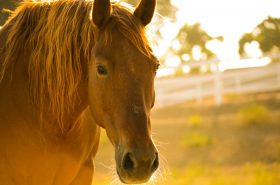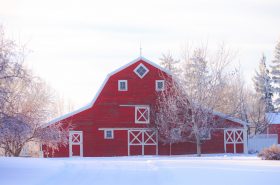This skin condition loves wet and muddy conditions.
Mud is inevitable on horse farms. You can take measures to avoid it, but likely there will still be some to a degree. When combined with moisture, your horse is at risk for various skin infections. One of the most common is scratches, also known as mud fever, greasy heel, and dew poisoning. This condition is painful and can cause scarring, so make sure to get a handle on it right away!
What is Scratches?
It’s a fungal infection. Bacteria and fungi find their way into your horse’s skin through tiny cracks and splits. It can be caused by muddy fields, a dirty stall, and a horse that goes from wet to dry constantly. Scratches usually appears on the pasterns or bulbs of the heel. The skin becomes inflamed, red, and sores appear.
In extreme cases, the legs may swell and become hot. Your horse will need veterinarian attention, as the infection has become very serious!
Treatment Options
It’s advisable to clip the hair away from the infected areas. This will leave the skin exposed, so treatment can be more effective. It’ll also make it easier to keep the area dry! Next, you’ll want to wash the area with antibacterial shampoo and let it sit on your horse for roughly 10 minutes. Gently rinse the area, but avoid scrubbing or picking at the scabs. They’ll be very painful! The scabs can be massaged off carefully. Pat dry the area with a clean towel, and then apply a topical treatment.
There’s a wide selection of available ointments for scratches. Many can be bought at your local tack or feed store. They should have antifungal and antibiotic properties.
Stick with this treatment daily for a week or so before cutting back to every other day. These horses should be taken off wet pastures and kept in a dry area. A clean stall is ideal! You can apply a layer of Desitin or another zinc-oxide cream to act as a water barrier.
In advanced cases, your veterinarian will prescribe a topical or even oral antibiotic.
How to Prevent Scratches?
The easiest way to avoid this skin condition is to keep your horse in a dry turnout area, such as a graveled lot, or inside a clean stall. If that’s not possible, then try to avoid early morning turnout. Dew and frost are worse in the early hours of the day! Additionally, when you bring your horse inside make sure to dry their legs thoroughly. It might be helpful to clip the hair of those with thick feathers.
It’s best to catch scratches early on! You’ll want to check your horse’s legs every day. Regular grooming and scraping off mud will help your horse avoid this condition. Keep in mind, drafts and those with long fetlock hair are extra prone.
Scratches is relatively common, but that doesn’t mean it should be taken lightly. Make sure to be proactive and treat it right away. Unfortunately, the condition is quite painful, so be gentle and patient with your horse during this time!



